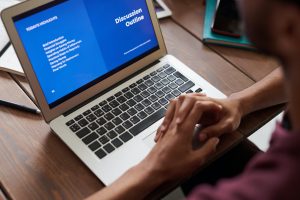Equitable Education in the Post-Pandemic World
The Covid-19 pandemic has disrupted all aspects of human life in ways unimaginable. For the past two years, among the areas it has impacted most seriously is education. Whereas equality in education has always been a pressing global issue, the advent of the pandemic only made equitable education an even more compelling concern today.
While most schools may be back open worldwide, education is still in recovery assessing the damage done and lessons learned. Let’s look at the harsh repercussions the pandemic has brought to the education sector.
What Does Education Look Like During the Pandemic?
Educational institutions and the world, in general, were not quite prepared to shift from classroom methods to online platforms abruptly.
According to UNESCO, the pandemic affected more than 1.5 billion students and youth with the most vulnerable learners being hit hardest[1]. Furthermore, some gains that have been achieved toward the goals of the 2030 Education Agenda were consequently lost.
In an earlier research, UNESCO reported the closure of schools and universities in over 138 countries just a few days after the pandemic took the world by storm impacting nearly 80% of the world’s student population. According to the same article, nearly 60 million teachers were forced to stay home after the sudden rise of confirmed COVID cases all over the world[2].
School closures have been substantial and uneven across countries. In lower-middle-income countries, schools remained closed for an average of 115 days. High-income countries closed for half the time that schools remained shut in low- and middle-income countries[3].
Most low- and middle-income countries could reach no more than 75% of their students through remote education. Although multiple modalities were used in general to facilitate remote learning, low-income countries relied more on radio and television while high-income countries favoured online platforms[3].
These disheartening developments have caused many scholars to project potentially dire impacts on learning loss and dropout rates, especially in low-income contexts[4].
In a recent The State of the Global Education Crisis: A Path to Recovery report produced jointly by UNESCO, UNICEF, and the World Bank, the three organizations sounded an alarm about the potential impact of the Covid-19-related school closures and economic shocks. It stated that this generation of students now risks losing $17 trillion in lifetime earnings in present value, or about 14% of today’s global GDP[5].
The aim of getting the whole world connected remains elusive despite increased web use amid the pandemic. New data from the International Telecommunication Union (ITU), the United Nations specialized agency for information and communication technologies, report that one-third of the world’s population or an estimated 2.7 billion people remain unconnected to the internet in 2022[6].
Practices that Address Learning Loss
Here are a few of the worthy practices being implemented by different countries in response to the need for learning recovery as reported by the World Bank recently[5].
1. Consolidating the curriculum
To ensure the curriculum is aligned with students’ learning levels, and to help teachers prioritize essential material that students have missed while out of school, Tanzania consolidated its curriculum for grades 1 and 2, reducing the number of subjects taught and increasing time on ensuring the acquisition of foundational numeracy and literacy.
2. Extending instructional time
To make up for a lost time, the school day is extended, the academic calendar is modified to make the school year longer, or summer school is offered for all students or those in need.
The Ministry of Public Education in Mexico announced planned extensions to the academic calendar to help recovery.
The Madagascar government scaled up an existing two-month summer “catch-up” program for students who reintegrate into school after having left the system.
3. Improving the efficiency of learning
Teachers are supported to apply structured pedagogy and targeted instruction.
A structured pedagogy intervention in Kenya using teachers’ guides with lesson plans has proven to be highly effective.
Targeted instruction, or aligning instruction to students’ learning levels, has been successfully implemented at scale in Cote D’Ivoire.
Learning Recovery: What Needs to be Done
Actions must be taken so that learning losses may not continue to accumulate once children are back in school, further endangering future learning.
Reopening schools as soon as possible and keeping them open must be the top priority, globally. Authorities need to reassure parents that with adequate safety measures, such as social distancing, the use of masks, and improved ventilation, children can resume in-person schooling.
Reversing learning losses, especially for the most vulnerable students requires in-person schooling. While remote learning opportunities are being offered by nearly all countries, the quality, reach, and results of such initiatives are poorer when used as a substitute for in-person instruction.
Reopening classes and going back to the old ways of teaching won’t reverse learning loss. Countries must implement Learning Recovery Programs to let students catch up on lost learning opportunities during the pandemic.
Increase the share of education in the national budget allocation of stimulus packages and tie it to investments that can accelerate learning, including improving students’ access to devices that support learning in a digital age.
Support teachers so they can have access to practical, high-quality professional development opportunities, teaching guides, and learning materials.
Invest in digital learning opportunities for all students, ensuring that technology is fit for purpose and focused on enhancing human interactions.
The Role of Technology for Equitable Education
The problem of equity in education and its impact on learning has existed for decades. Learning loss brought about by the pandemic has exacerbated the issue even more.
By accelerating learning recovery, children can be given the necessary foundations for a lifetime of learning. It can also help countries increase the equity, resilience, and efficiency of schooling.
Technology is the key to addressing issues of learning recovery and equity in education, a powerful tool that could be used to effectively level the playing field.
Technology could be used to create a learning environment that fosters personalized learning for all students that could help them learn in ways that fit their individual needs.
Through technology, information about the country’s efforts and best practices in providing inclusive education in different contexts could be shared and emulated.
Technology could be utilized to provide training and support for teachers adapting to the changes in post-pandemic education.
The right technology tools such as digital learning resources to support governments, schools, teachers, and parents reaching out to learners unable to attend school could be identified and made available.
Technology could facilitate the creation of a repository of national learning platforms to support the continuity of curriculum-based study.
Countries have an opportunity to accelerate learning and make schools more efficient, equitable, and resilient by building on investments made and lessons learned during the crisis.
Nothing is impossible with technology. The inequalities in education we face could well be addressed with deliberate planning and technology utilization – in much the same way as the conversion of Saudi Arabia, one of the world’s largest deserts into a fertile and productive land benefiting its citizens and the region.
References:
- “UNESCO’s education response to COVID-19”, UNESCO. https://www.unesco.org/en/covid-19/education-response/initiatives. November 4, 2022.
- “1.37 billion students now home as COVID-19 school closures expand, ministers scale up multimedia approaches to ensure learning continuity”, UNESCO. https://en.unesco.org/news/137-billion-students-now-home-covid-19-school-closures-expand-ministers-scale-multimedia. March 24, 2020.
- “Disruption Due to School Closure”, UNESCO Institute for Statistics. https://covid19.uis.unesco.org/disruptions-due-to-school-closures/.
- Moscoviz, L; Evans, D. (March 14, 2022) “Learning Loss and Student Dropouts during the COVID-19 Pandemic: A Review of the Evidence Two Years after Schools Shut Down”, CGD. https://www.cgdev.org/publication/learning-loss-and-student-dropouts-during-covid-19-pandemic-review-evidence-two-years
- Ahlgren, E., et al. (January 4, 2022) “The global education crisis – even more severe than previously estimated”, World Bank. https://blogs.worldbank.org/education/global-education-crisis-even-more-severe-previously-estimated.
- “Internet surge slows, leaving 2.7 billion people offline in 2022”, ITU. https://www.itu.int/en/mediacentre/Pages/PR-2022-09-16-Internet-surge-slows.aspx. September 16, 2022.




